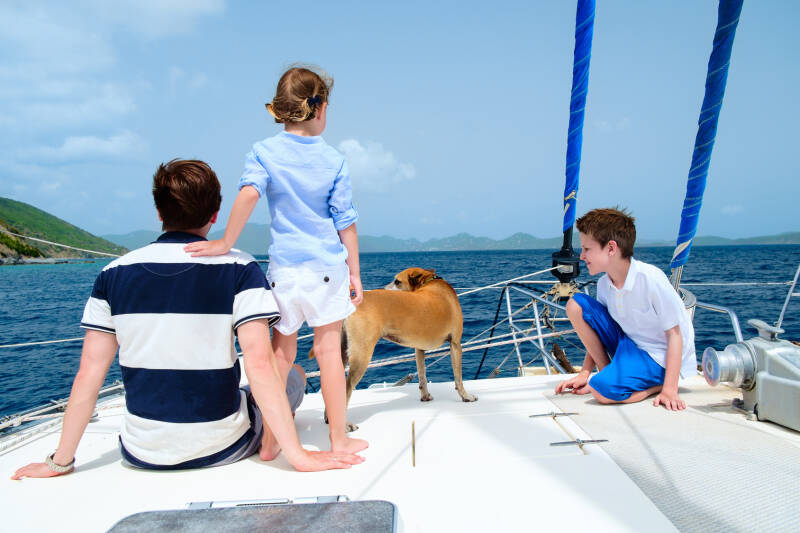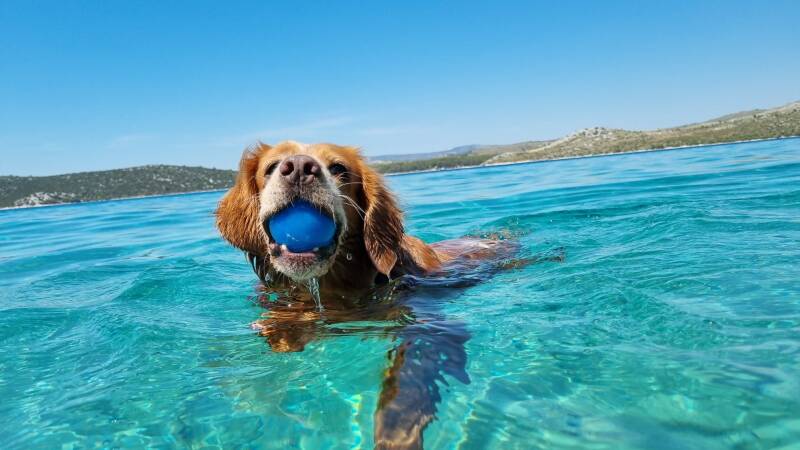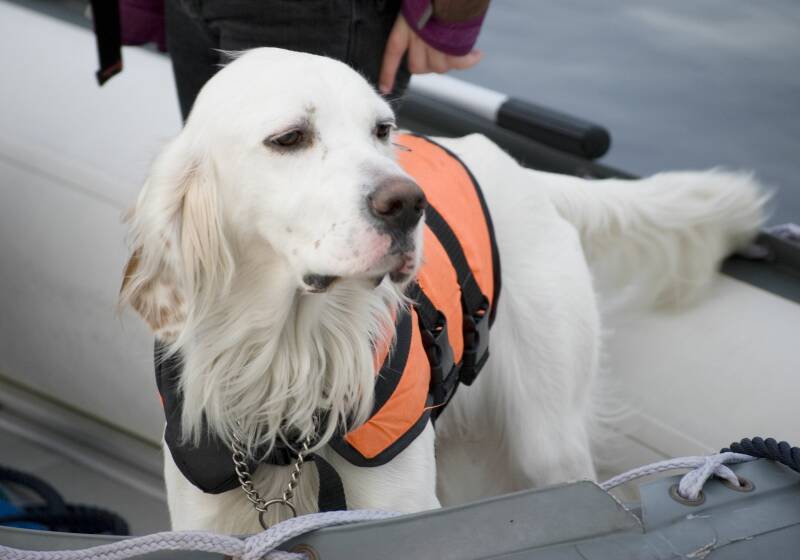Sailing with Pets on Board
You have booked your sailing vacation, but you do not know what to do with your pet, and you are probably asking "Can I take my pet aboard the charter yacht?" The answer depends upon your charter agency, and you have to check that in advance, but in most cases the answer is yes.
Documentation, Vaccination, and Quarantine
When taking your pet with you aboard a yacht, consider the following tips for sailing with dogs and cats. Different countries apply different rules when it comes to navigating with pets, so be sure to have proper documentation for your pet to enter a country. For that reason, it would be best to contact the appropriate authorities before the trip. Make sure your pet is microchipped because in many countries the chip is obligatory. Also make sure to have your pet vaccinated on time, and check quarantine laws since some countries require pets to be quarantined.
Practical Issues when Sailing with Pets
There are some possible issues you need to consider before taking your pet aboard a charter yacht. If you are taking your pet sailing for the first time, it may be scared, so you need to reserve a corner for it to hide. Also be sure to remove anything that might harm your pet because it can panic. Do not forget to include all the vital information on your pet's identity tag.
Toilet
Now you are probably wondering what to do when your dog needs to go to the toilet? Dogs aboard charter yacht do not have many options. After all, you cannot expect a dog to hold it up until you find a suitable anchorage. A good idea would be to get a piece of AstroTurf. It will give your pet an illusion of grass, and it is easy to clean. You can also get a cat litter box. However, be sure to place this below deck for stability reasons. Another option, albeit more complicated and time-consuming, is to train your dog to do what it must do overboard. But beware, there is a potential danger of your dog falling into the water.
Companionway stairs
Another thing to consider when having a dog aboard the charter yacht is that companionway stairs need to get adapted for your dog. Companionway stairs may be too steep for the dog to climb. An easy solution is to put a plank onto the stairs.
The Dangers - Fear and Panic
If you do not know how your pet could react to sailing conditions, take it on a few short boat trips. To make your pet feel at home on the yacht, take its toys and blankets. Your pet may get scared once aboard the ship, so will need all the help possible to make your dog or cat feel safe, and toys and blankets it uses at home are the things to help. Take your pet's bed or basket if it is very attached to it.
Animals tend to panic in unfamiliar situations and can get violent when scared, so you need to make sure your pet does not hurt itself or someone else.
Sunscreen and Sea-Sickness Medication
Pets can also get sunburnt, so make sure there is enough shade for them and that they have enough water. If you can, it would be smart to get a pet-friendly sunscreen. Also get sea-sickness medication for your pet - some of the same medicines used for humans also work for animals, but you should consult your vet.
Falling Overboard
You need to be extra careful when sailing with pets. Your dog should not be in the way or it or someone else might end up hurt or overboard. Your pet may be a good swimmer, but it will need a pet flotation device as it can save its life. If the conditions are especially rough, it may be a good idea to tether your dog to the boat and put a PFD on the dog. A smart thing would be to attach a swim platform to the yacht. In that case, if the dog falls overboard, it would be easier to recover the animal. A good idea would be to take a harness because it can help if your pet ends up in the water. Whereas a simple collar would slip over their head or severely choke them during a recovery from the water, the harness, made from durable webbing material, provides a lifting handle capable of supporting your pet's entire weight.
When on shore, keep your dog on a leash and, if needed, put a muzzle on the dog's snout. This is ordinarily necessary with the more massive dog breeds or if local laws demand it.










